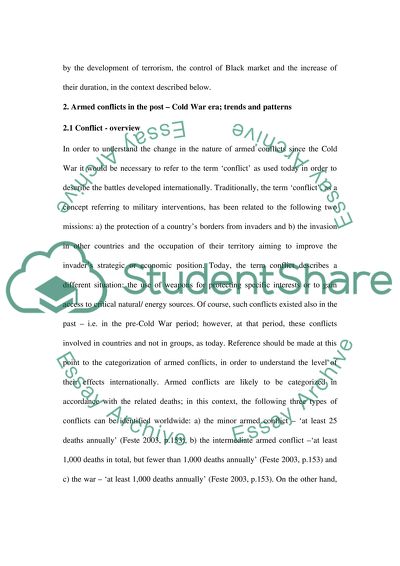Cite this document
(“Trend and pattern of armed conflicts since the Cold War Essay”, n.d.)
Retrieved from https://studentshare.org/environmental-studies/1410048-trend-and-pattern-of-armed-conflicts-since-the
Retrieved from https://studentshare.org/environmental-studies/1410048-trend-and-pattern-of-armed-conflicts-since-the
(Trend and Pattern of Armed Conflicts since the Cold War Essay)
https://studentshare.org/environmental-studies/1410048-trend-and-pattern-of-armed-conflicts-since-the.
https://studentshare.org/environmental-studies/1410048-trend-and-pattern-of-armed-conflicts-since-the.
“Trend and Pattern of Armed Conflicts since the Cold War Essay”, n.d. https://studentshare.org/environmental-studies/1410048-trend-and-pattern-of-armed-conflicts-since-the.


